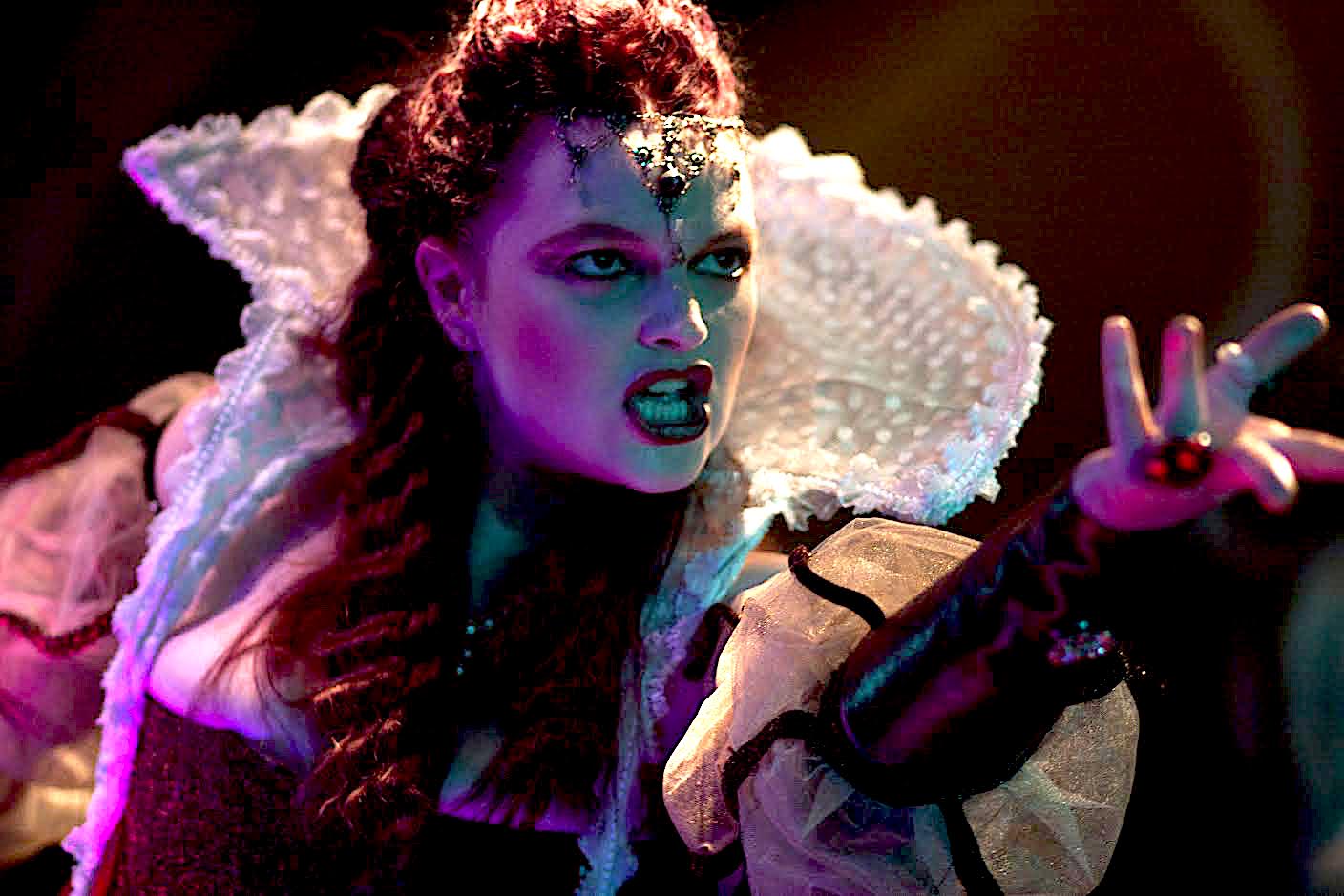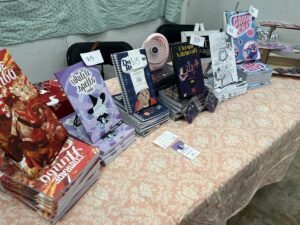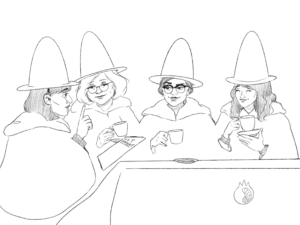On this, All Hallows Eve, is there anything better than reliving a phantasmal frolic of blood-soaked beauty upon a gilded stage? Oh, yeah, did I mention there aren’t any men? Vampyress, as performed by Ethos and the Vortex, ran from September 22 to October 28 and it was a seductive, rich work of over-the-top gothic lunacy.
By design I knew very little going into this show. I’d heard the words “gothic,” “opera,” and “vampires” and plunked down my money. I’d never seen a show at the Vortex theatre before, but I’d heard nothing but good things, and wanted to be surprised.
The program promised strobe effects, fog, nudity, violence and a whole lotta blood—and boy did it deliver.
The plot is thus: Erzsebet Bathori, a Hungarian Countess of ill repute, and her lesbian lover Stephan Hapsburg are chilling in her castle, murdering a bunch of virgins for funsies and also to keep Erzsebet beautiful and young forever. The King of Hungary gets wind of, like, over six hundred girls going missing, and grabs Erzsebet’s cousin/uncle/ex-boytoy Count Thurzo for a quick roadtrip to her castle to ruin her fun.
That may seem a little simplistic for an hour and a half show, but this plot takes a lot of detours. This is a show that delves heavily into symbolism and metaphor—even the cast of characters is split into the ‘Major’ and ‘Minor’ arcana.
At three points in the opera we’re taken out of the main story and given fairytale-like vignettes—all three of which are stories of angelic, wistful beings taken and defiled by creatures from the darkness. These stories of nymphs and angels begin to meld with encounters Erzsebet has with a moon goddess and a dark mountain sorceress, who leap from the confines of her mirror to lend her devilish aid. Like Erzsebet herself, the audience, too, begins having trouble distinguishing fantasy from reality.
Because of these detours and the metaphorical power of portals and gateways in this show, the set itself almost functioned as another performer within the small cast—minimal, but veined through with lighting to create depth and move your eye from one space to the next; the multiple levels and textures created many different spaces in one.
Also, did I mention that the entire cast is made up of just SEVEN women, who create TWENTY-ONE roles, often shifting between genders at the drop of a hat.
Actors Amanda Clifton and Micah Gause take on the most roles and do the most transitioning between male and female; they’re referred to as ‘Shapeshifters’ in the program, which I love. Playing everything from angels to devils to a younger version of Erzsebet herself in a flashback, they really knit the story together, and they do so without missing a beat.
Eryn Gettys as Count Thurzo not only rocks an astounding set of pantaloons, but her facial expressions alone made the show for me. Thurzo is the closest this story gets to a comedic relief character, and Gettys makes a superb fop while still managing to be graceful.
Erzsebet, portrayed by Melissa Vogt, is an absolute powerhouse. Her presence is commanding and seductive, and she’s got one helluva evil laugh. Erzsebet is a woman driven to madness by her own vanity, but Vogt also gives us the sense that she’s just having a wonderful time stretching virgin skin into massive dragon wings, which I find refreshing. There’s no sense of “the devil made me do it”—it’s more like “the devil backed my kickstarter so we can add 20% more murder.”
As with so many vampire myths, Vampyress is a story seeped in sex. The major difference to me was that so many times vampirism is turned into a metaphor for rape, and that is not the case in this particular tale! There is seduction to be sure, and a literal ton of murder of non-willing virgins, which is certainly a form of violation. But never once did I get that sickly, twisted feeling I always get when I see rape portrayed in any form of media. Sex is a weapon in Erzsebet’s arsenal, but at the end of the day, hers is a story about power, agency, and a killer skin regimen.
As with the vampire aspect, the nudity within the show is also never sexual in a skeevy way. Nakedness is used more to indicate power dynamics than anything else—Erzsebet’s virgin sacrifices are laid bare before her, stripped of any protection as she takes their lives. Her servants within the castle are also portrayed bare-breasted before their mad Countess. Erzsebet strips herself as part of her dark magic rituals, peeling away all artifice to bathe in blood and seek immortality in the darkness. (Yes, there is a literal blood shower, and yes it is AMAZING.)
I think one of the major reasons the nudity works as well as it does lies in the fact that this entire production is a celebration of the female form in all of its variations. These women are dark, fair, slim, thick—there are bellies and cellulite not only on display, but lit from underneath, and every single inch of these women is nothing less than stunning. There is vulnerability without fragility, and while the male gaze is present, it is never the focus—it is a farce.
Chad Salvata, composer and writer of Vampyress, describes his show as “a black magick farce conjuring relentless, turbulent venom. If comedy is the sister of anarchy, then farce is her malevolent bastard.” The show does certainly delve into the realm of anarchy; it’s a mad mixture of symbols and songs, metaphors and magic.
For centuries, we’ve been fed the narrative of evil women, devil’s brides sent to lead men astray, to tempt and to titillate—Erzsebet Bathory does no such thing. Even to the last moment, when she has been surrounded, defeated, Erzsebet stands tall and proud, covered in the blood of her victims. In her madness she has found that which so many women desperately desire—absolute freedom.








